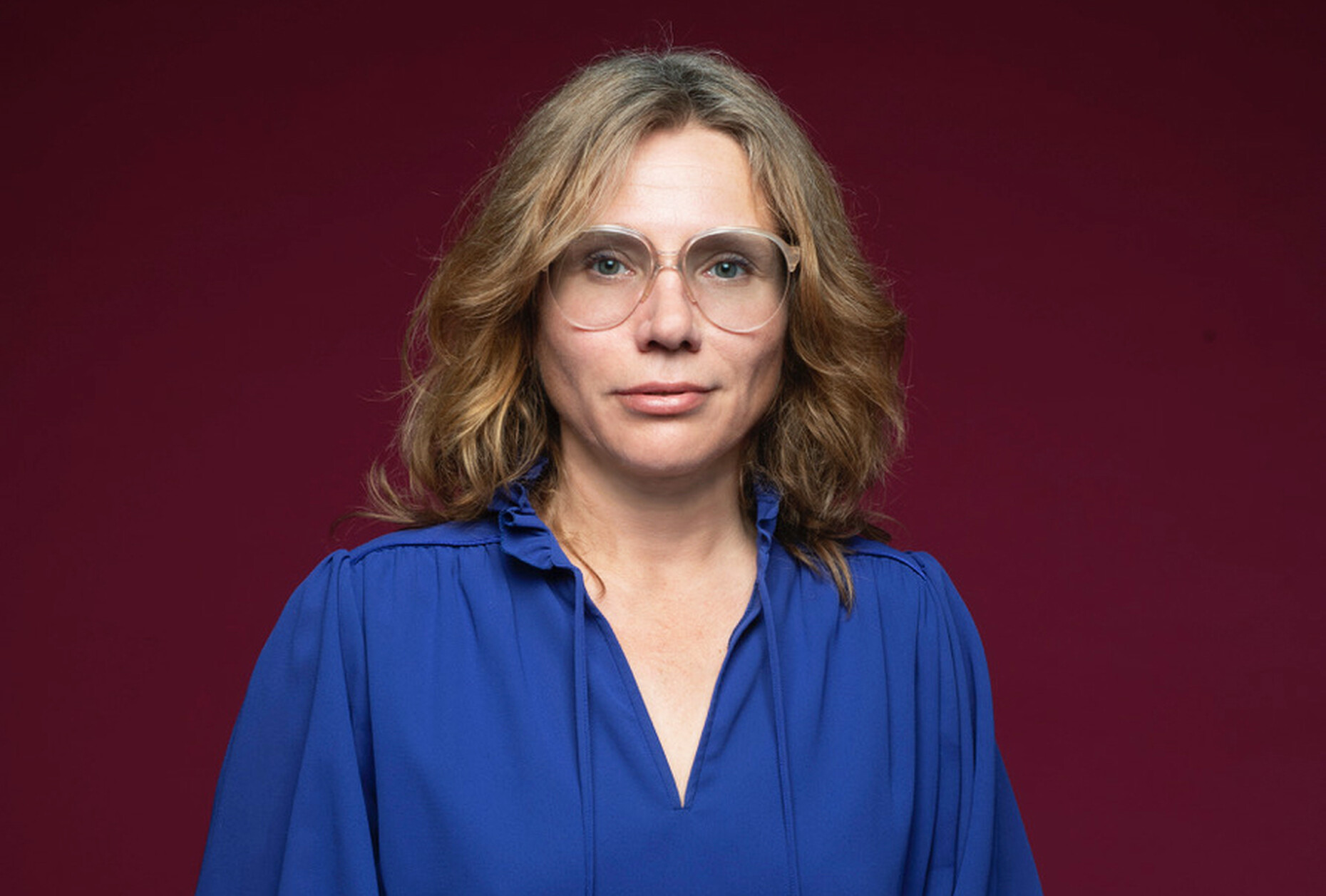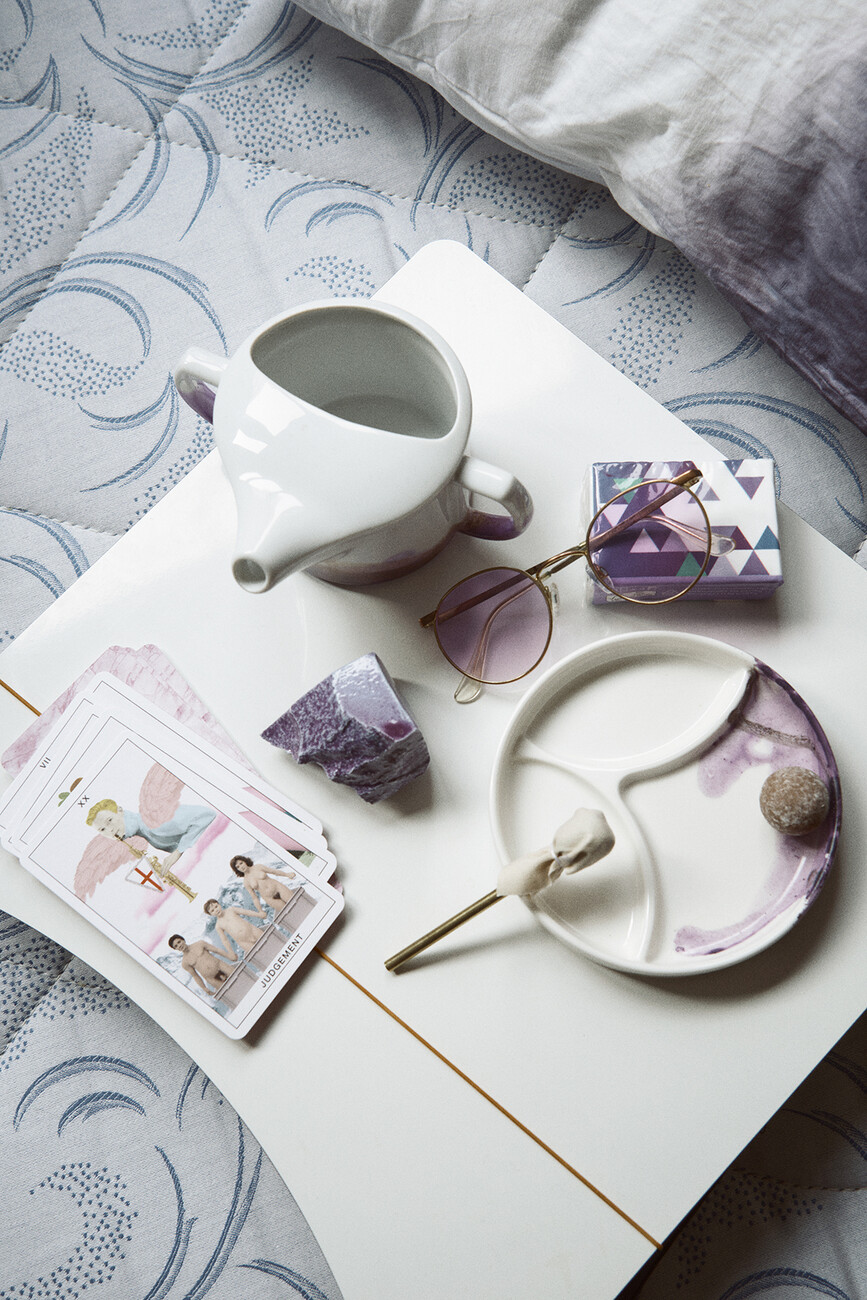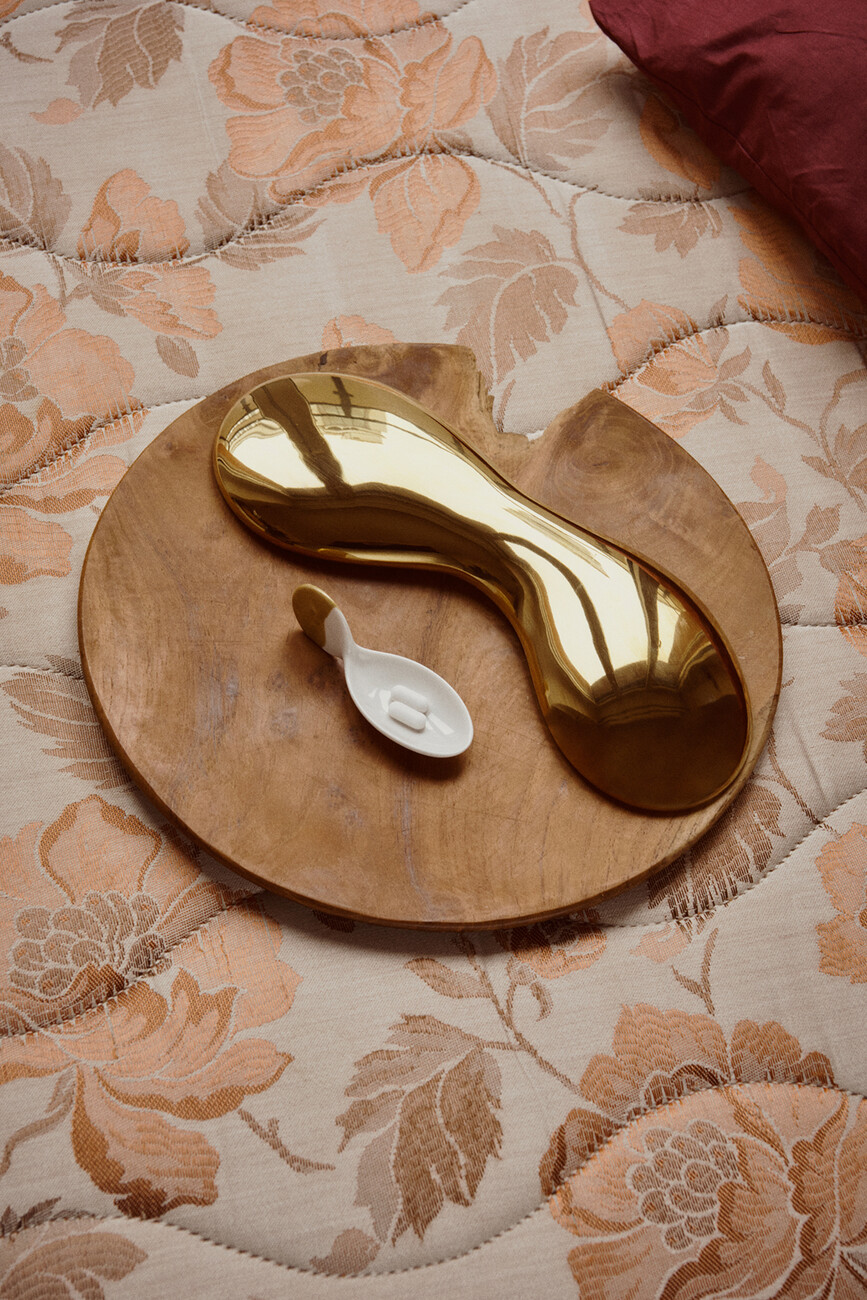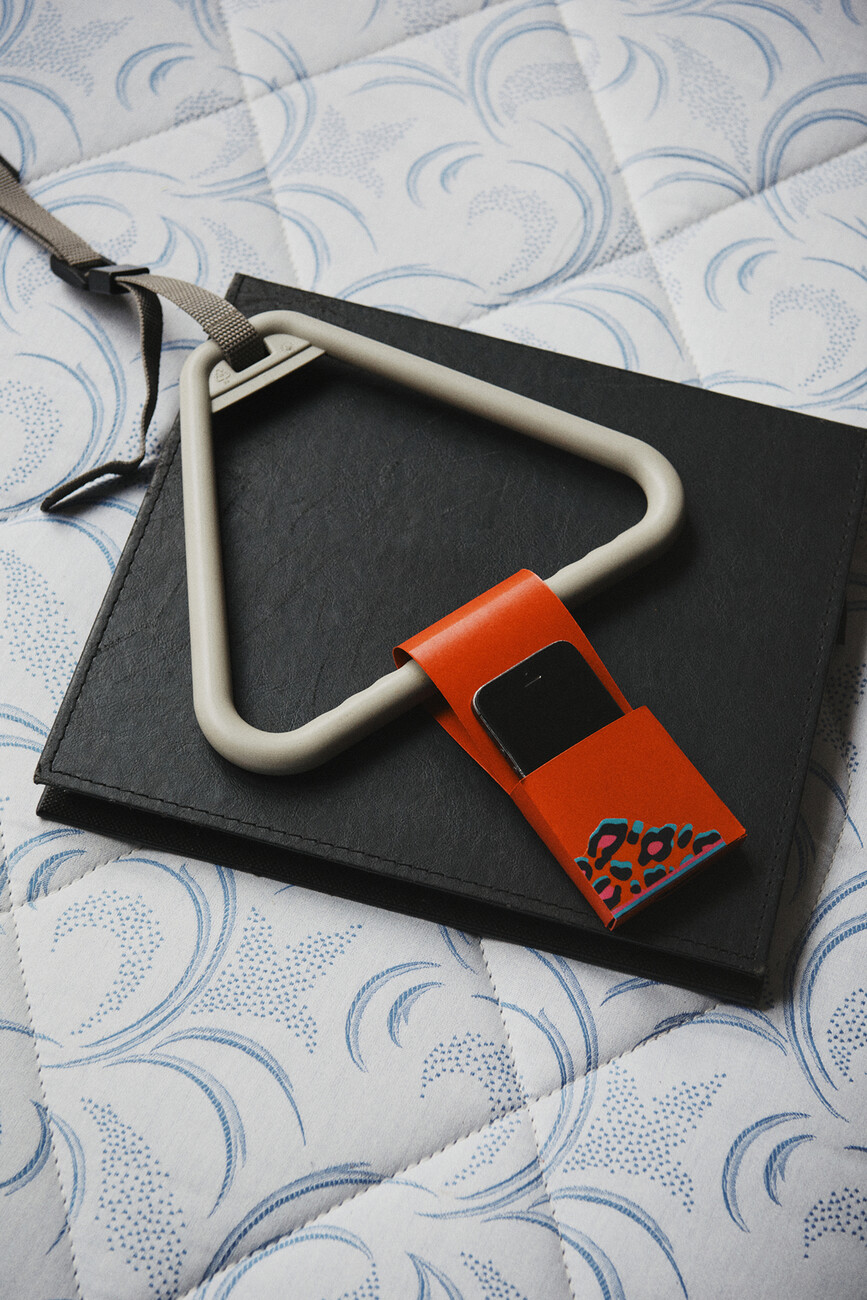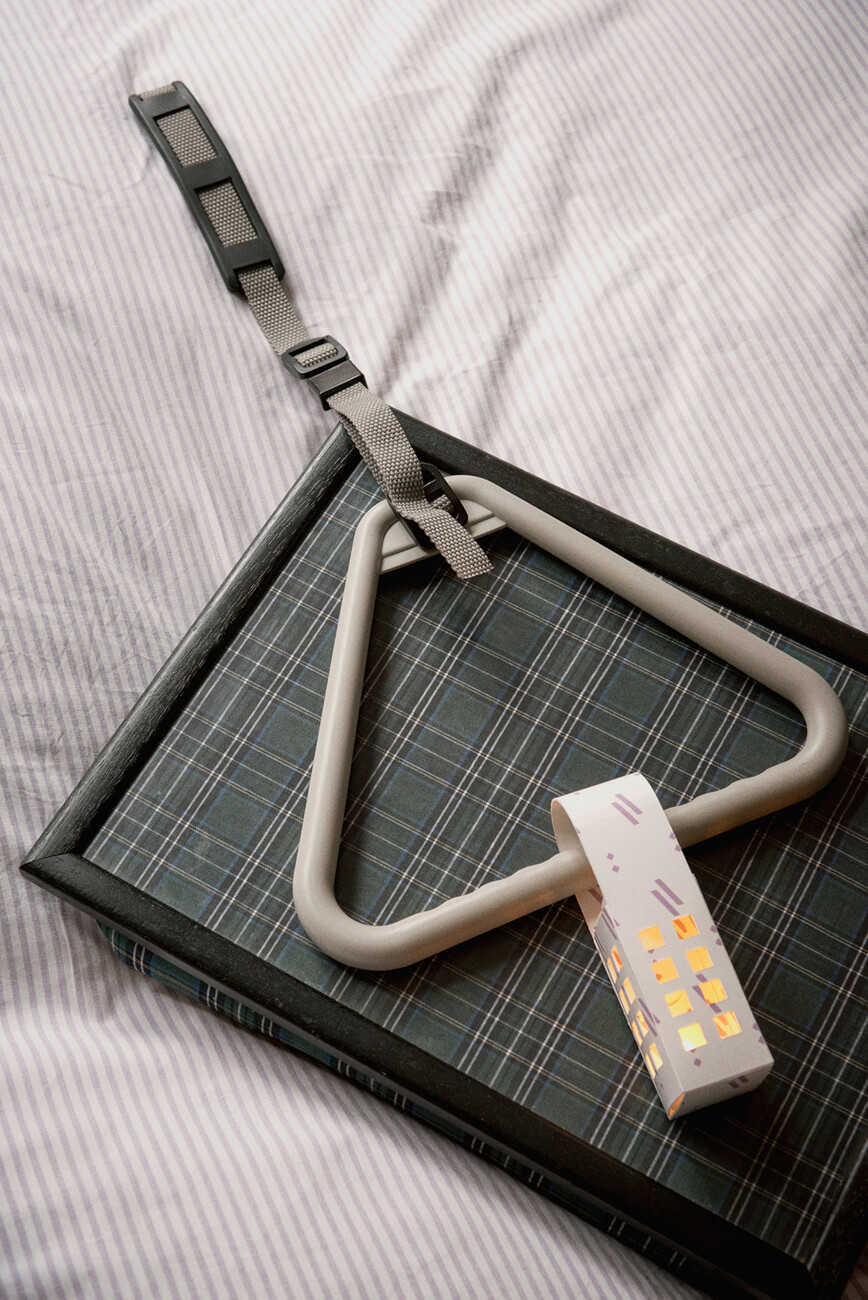HEALTH
Blind Spot
Anna Moldenhauer: Professor Stetter, why are you researching prototypical designs for palliative care?
Prof. Bitten Stetter: The starting point for my research was my own experience accompanying a relative, for instance, what's needed when their living space decreases. While doing this, I noticed that general knowledge about the assistance people need at the end of their lives, or about what needs they may have is rather limited. The need for food, for example, then becomes less important. I did research on material culture at a palliative care ward and learned a great deal from the care givers there. I also experienced how much has to be improvised in their daily routines because certain things are not available. Up to now, design in this area has been more geared towards curative medicine and less towards palliative care.
Why is the design of products for palliative care and dying a blind spot for designers?
Prof. Bitten Stetter: I think you have to distinguish between the two – care itself is very much shaped by its medical setting. As early as the 19th century it was noted that material culture is important in nursing. Without proper materials, care isn't possible at all. And yet this field has received little to no attention in research, except when it comes to the technological aspects. Very little attention has been paid to the objects we come into contact with during care – neither in nursing research nor in medical research. It's difficult to say why this is the case. I think that from a design perspective, it has to do with the taboo that death and dying have. Dying, of course, doesn't have a good reputation. It's not a neat, clean process, and getting involved in this sector doesn't suit every designer either. Moreover, it seems that the design attitude "form follows function" is still widespread in medical settings. This means that the focus is less on the aesthetics, sense and significance of things and more on pure functionality.
Products dealing with this topic are probably also difficult to market.
Prof. Bitten Stetter: Yes, perhaps. It's not "chic". People are much more concerned with the question of what comes after death than with the shaping of the last phase of life. It's not just a blind spot with regard to design, it's a blind spot in our society as a whole. There's a great desire to come close to immortality or just go to sleep and not wake up. Dying is no longer celebrated as an event in Western society. The whole thing has changed a lot over the last few decades and centuries, partly because medicine can now do a lot more and the course of an illness can be greatly influenced and delayed. Cultural awareness about the end of life is anchored in us, but we don't really want to deal with it anymore.
In other words, we try to maintain a “healthy image” as long as possible and when the situation becomes difficult, we just become invisible to society. Care and dying have become very institutionalised, hardly ever take place within the family anymore, and have thus become unfamiliar to us. How do you think design can help us to normalise the experience to some degree?
Prof. Bitten Stetter: My view has changed over the course of the five years I've spent looking into this. At first I thought it was important to design products for a palliative care unit's medical environment. Now I think this is looking at it the wrong way, because everything takes place in the hermetically sealed space of an institution. We should be encountering such products more often in "healthy" everyday situations, however, because their use is not necessarily limited to nursing. Through them, we can also learn more about the life's last phase. At the moment, I'm able to exhibit my prototypes relatively often in museum contexts, and I notice that people who haven't yet been confronted with the end of life or the care of a person do not know many of these products at all. When I introduce these things into everyday life, people start asking questions about their use. My approach is to tell them about the design – for instance a plate that's much smaller and thus makes the reduced need for food at the end of life more understandable. Pleasant aesthetics and soothing materials can reduce the fear, disgust and shame we all have about this topic. Not being able to actively participate in life and possibly having to be a burden on others is often associated with a great deal of shame on the part of patients.
The research products you're developing as part of the Swiss National Science Foundation project "Sterbesettings" (Settings of Dying), are practical in design, offer independence, and are also intended to give back a bit of dignity and contribute to well-being. They serve to improve a person's quality of life just before death. How could this idea be integrated in our hospitals and care facilities as a standard practice, regardless of the financial contraints patients may have?
Prof. Bitten Stetter: This is an aspect that I'm often confronted with. As a designer, when you start to enter the market with small quantities of your own products, and then make things in a sustainable way, your costs as well as your prices are higher at first. But consumption democratises itself through imitation. I have designed many do-it-yourself products that can be copied cheaply, and my ideas can also serve as a source of inspiration. Using my prototypes, I invite people to think about what's important to them: What's good for me at the end of my life, what would increase my quality of life? The goal of my projects is to sensitise people about what dignity and well-being mean at the end of their lives. I also hope that a change in demand will also trigger a change in what institutions have on offer – just as vegetarian food is now available because there's been an increased desire for more diversity. Certainly, my approaches don't mean there's something for everyone, but there should be a possibility to choose individually if a person is so inclined.
Many products are made of cardboard, and are light, foldable and recyclable, but some items are also made of ceramic. Aren't these too heavy, and couldn't they potentially break if patients can't grip them properly?
Prof. Bitten Stetter: The ceramic is very light, and we also worked on its development for a very long time. The clay used is similar in weight to existing plastic products. Of course such items can break if they fall down, but I don't think injuries are possible so quickly. I've worked in palliative care myself and the cups didn't get dropped or fall down all the time. Patients still eat from porcelain plates. From my point of view, these ceramic products could help people in their day to day lives at home as well, because on the last stage of the journey, people are not necessarily always in institutions, especially if they have chronic illnesses. The things we've designed should serve as companions, which also means that people can take a piece of their familiar surroundings with them if and when they move to somewhere new.
Have you already tested the effect your products have on patients' daily lives?
Prof. Bitten Stetter: Yes, and the feedback I've gotten is that the products designed for everyday use are also accepted at home, because patients find the difference in aesthetics and the higher quality feel to be positive for their well-being, due to their familiarity with the materials. Very few of us drink from plastic cups at home or when we're healthy.
You use many English terms for your work, such as Travel Wear, Final Studio, End-of-Life Care, Settings of Dying and Care Design. Do we need an abstraction of such terms in order to deal with the topic of death-related design, and does this also make it easier to convey your ideas?
Prof. Bitten Stetter: Let me give you one example: Kompressionshose, i.e. compression pants, and Shape Wear are basically the same product, but completely different in terms of their social acceptance. Shape Wear is worn because it's associated with a beautiful figure. I do believe that language, for instance by renaming things, gives us easier access to this topic. Some words have negative connotations, like "adult nappy". The term triggers anxiety and disgust in us. If you say "diapers" instead, you can potentially make the product more accessible. The terminology I use is therefore a very conscious decision. We already associate different actions with the terms "care" and Pflege. In the German language, Pflege is reduced to purely physical, bodily assistance. Care, on the other hand, actually means caring, which in our understanding has a much larger associative space and a broader field of application. "Palliative care" and "end-of-life care" provide a different spectrum, as the term "care" is also much more concerned with the psyche and social, existential questions.
Your research also includes the design of “desired” rooms. What are your findings here?
Prof. Bitten Stetter: A “desired” death room is a very individual thing, both on the part of the caregivers and the patients. Having plants and a sweeping view out a window are themes that were often mentioned by patients in my surveys. A wide spectrum of colour also plays a role. The other furnishings depend very much on the individual person and their age. One should be able to die as individually as one lives, and palliative care does actually strive to make this possible. But this individuality is often not provided in practice.
You are the head of Research and Investigation in the Trends & Identity programme at Zurich University of the Arts, and also teach design at other universities. What core message about your work do you want to convey to your students?
Prof. Bitten Stetter: That you have to observe the need for design outside your own comfort zone, because there's a strong tendency to design for yourself and your own immediate environment. I also have the impression that many designers are looking for projects and tasks outside of our own Western society, because they have the feel that there are no longer any tasks in this country where you can really bring about a change with your design. If you open your eyes wide enough, you can still find things in Western society that are worth taking a closer look at and asking questions about redesign or design in general. Based on my research, I'm also of the opinion that you should take a close look at the respective living environment for which you're designing before you get started, and get in touch with the people for whom you're designing.
Are prototypes based on your product research actually being produced?
Prof. Bitten Stetter: I'm currently trying to find ways to bring the prototypes into sustainable, socially responsible production. Thankfully, I've received a grant from the Age Foundation that will help bring the products out of a museum context and into actual use. The challenge is also to increase the quantity of products so that the prices will go down, making everything accessible to a larger audience. At the end of life's journey, people often don't want to spend a lot of money on themselves, although I don't agree with this attitude. The products are intended as travel companions and are not just for short-term use. They are intended to serve both those affected and the carergivers and relatives as they go about their everyday lives.
What are you working on at the moment?
Prof. Bitten Stetter: We're currently working on a book launch for "Kontext Sterben" (Context Dying), which will take place on 27. April 2022 (7 p.m. – Buchhandlung Never Stop Reading Spiegelgasse 18 / Untere Zäune 8001 Zurich). I'm also designing a dying room for an exhibition in Zurich at the Kulturzentrum Vögele, which will open on 17 May 2022.

Kontext Sterben
Institutionen – Strukturen – Beteiligte
eds. et al.: Corina Caduff, Francis Müller, Eva Soom Ammann, Minou Afzali
Scheidegger & Spiess
240 pp., ca. 30 colour und 10 monochrome figures
paperback
ISBN 978-3-03942-050-6
38 Euros
